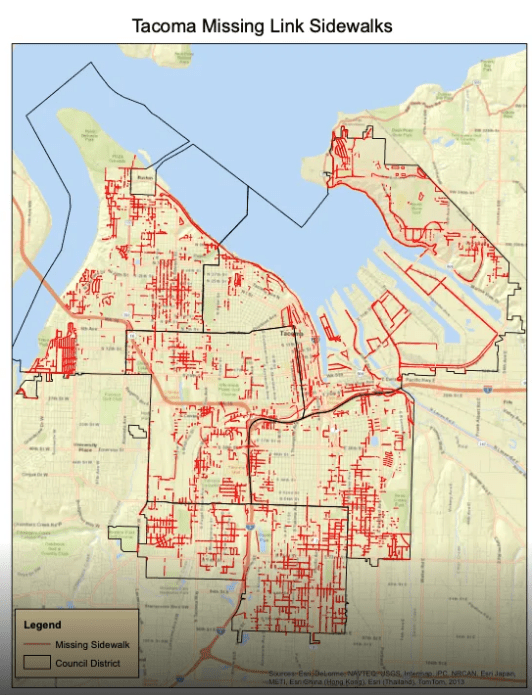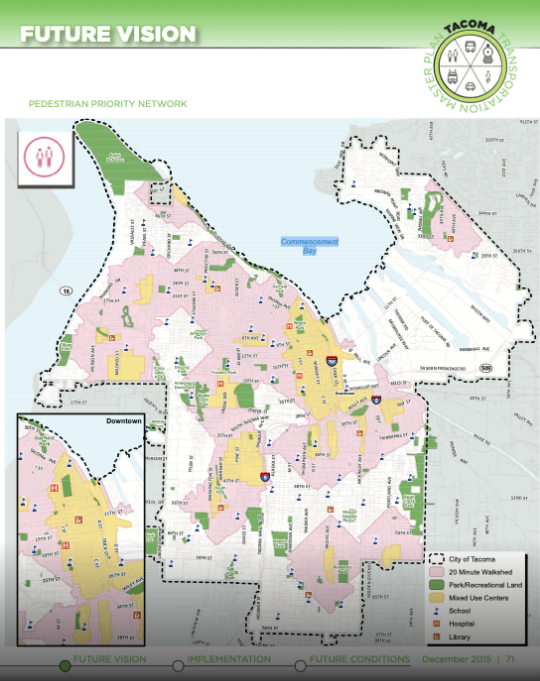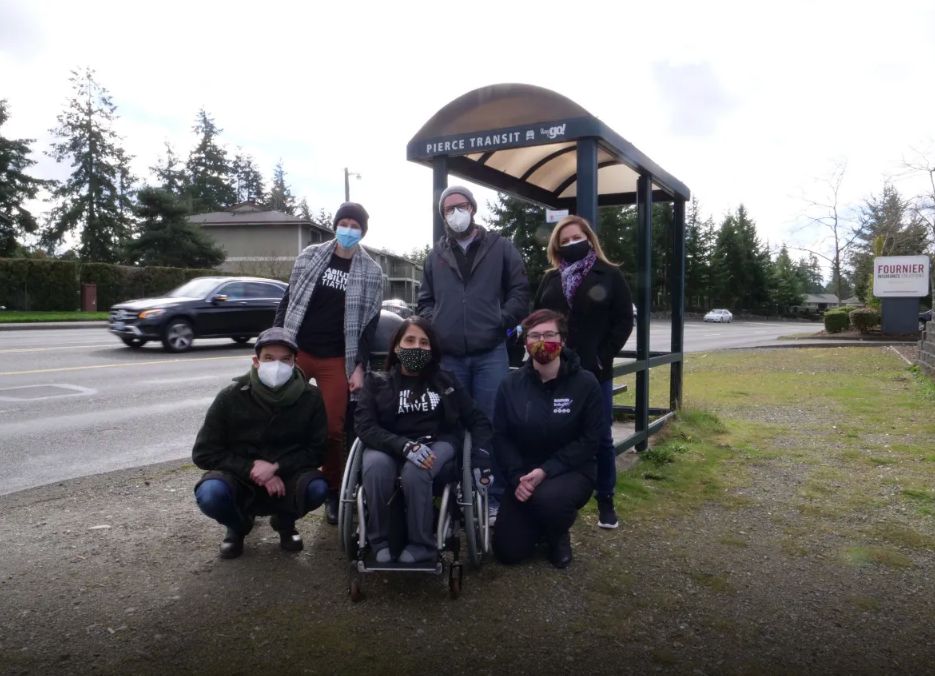Reprinted with permission from "The Urbanist."
On March 9, advocacy organizations Front and Centered and Disability Rights Washington held the first of a series of press conferences calling for Washington State legislators to halt spending on new highways. Instead, the coalition urges lawmakers to prioritize investments in building missing sidewalks and creating reliable transit and paratransit systems to serve all Washington towns and cities.
BIPOC & Disabled Washingtonians: No new highways until we have sidewalks and reliable transit!
— Disability Mobility Initiative (@non_drivers) March 8, 2021
Join us tomorrow at 11am in Tacoma or on Zoom.
Details: https://t.co/eF5hgdudsm pic.twitter.com/rRlAnTpvfW
To highlight the need, the press conference shared the testimony of Krystal Monteros, a Tacoma resident, wheelchair user, and Pierce Transit rider. Monteros, who previously published an editorial with The News Tribune about her ongoing struggles with Tacoma’s patchwork sidewalk network, demonstrated how accessing the bus stop near her apartment building requires rolling her wheelchair into 56th Street, a thoroughfare with fast moving traffic. Monteros also explained that she would have preferred to rent an apartment in a more affordable building further west on 56th Street, a decision made impossible by missing sidewalks on that stretch of the road.
“To have mobility justice in Tacoma, we need full connectivity between housing, transit, and destinations,” said Tracy Oster, Executive Director of Downtown On the Go, Tacoma’s transportation advocacy organization. “No one should be limited in where they can live or where they can go due to a lack of accessible infrastructure. Fixing missing or inaccessible sidewalks needs to be a priority and we encourage the legislature to include funding for these projects in the next transportation package.”
Monteros is far from alone in her struggles with unsafe road conditions in Tacoma. In the backdrop of the press conference, a man using crutches struggled to make his way to the same Pierce Transit bus stop Monteros had called out for being unsafe.
To shine a light on these struggles, Disability Rights Washington has published its Transportation Access Storymap, which highlights how people without driver’s licenses (roughly a quarter of the state population) navigate access to essential services. The project has been turning some heads; an article about Leigh Spruce, who was profiled in the storymap, ran recently in Everett’s Herald.
A map of missing sidewalks provided by the City of Tacoma vividly illustrates the pervasive nature of the problem. But Tacoma is not alone. Even Seattle, which is consistently ranked as one of America’s walkable cities, has its fair share of sidewalk woes. The City of Seattle estimates that 24% of Seattle streets (11,000 blocks) are missing sidewalks. Current funding allows for about 25 blocks of new sidewalks to be constructed in Seattle annually.

In Tacoma, current city policy allows for the City to construct new residential sidewalks only in cases when a property owner has constructed a new home or remodeled a home with an improvement value greater than 51%. Additionally, neighbors can organize a Local Improvement District to self-finance street improvements including sidewalk installation.
According to estimates, the total cost of labor and materials in Tacoma comes out to about $8.26 per square foot of sidewalk; thus, installing one mile of new sidewalks at a width of four feet, the the minimum for a residential street in most municipalities, would cost about $174,451.
These policies leave most Tacoma residents, of whom about 17% live in poverty, without options for sidewalk construction or improvement. The current system, which relies on new development or private investment, is posed to increase infrastructure disparities in a city already grappling with the impacts of gentrification.
Like Monteros, many Tacoma residents are unhappy with the current situation. A 2020 survey conducted by the City, found less than half of residents (44%) were satisfied with current street conditions. The City aims to improve the situation with an ambitious Pedestrian Priority Network, but building out the network will require a significant investment increase in not only sidewalks, but also pedestrian signals and other intersection improvements.

Advocates have been calling for the need to expand sidewalks, ADA accessible infrastructure, and access to reliable transit and paratransit across Washington State for decades. But progress has been slow. Investment in highways and other car infrastructure has been consistently prioritized over active transportation infrastructure to tune of billions of dollars. For example, this year Washington State Democrats have proposed investing more in walking and biking infrastructure and public transit than ever before; however, even their most ambitious proposal earmarks more than twice as much funding for highway-related expenses ($17 billion) than for low carbon reduction projects ($8 billion).
In terms of real investments, this means less support for Safe Routes to School (SRTS) and Pedestrian and Bicycle Program grants. According to the Washington State Department of Transportation (WSDOT) less than 20% of grant proposals will be able to receive financial support during the 2021-2023 grant cycle. A statewide map illustrating the exact locations of unfunded bicycle, pedestrian, and SRTS projects, can be viewed on Google Maps.
The current funding spending package considered by lawmakers would be in force for 16 years. That’s why advocates are pressing lawmakers now for a radical shift in priorities.
“The way we have funded transportation has left out too many people, most often people of color and poorer communities but everyone who doesn’t drive,” said Paulo Nunes-Ueno of Front and Centered. “Rules that were put in 1944 — before the civil rights era — are still guiding where and how we invest our transportation dollars. We can do better than this. Backfilling the human-scale transportation that we need for a fairer, greener future will take the same tenacity and focus that helped us build our amazing car-centric highways and byways.”
Readers can keep up with the coalition’s advocacy work by following Front and Centered and Disability Rights Washington on social media.
We hope you loved this article. If so, please consider subscribing or donating. The Urbanist is a 501(c)(4) nonprofit that depends on donations from readers like you.






